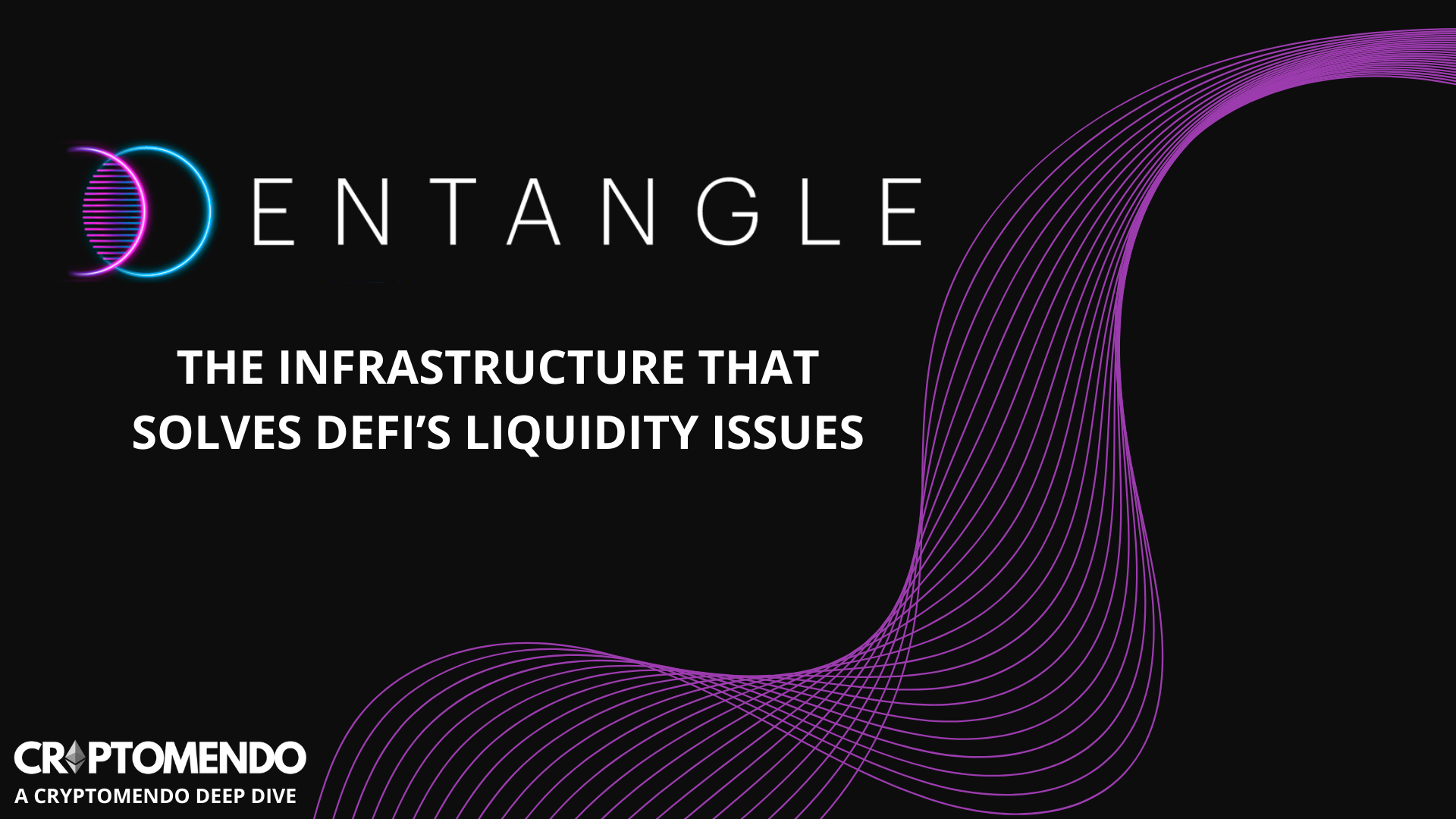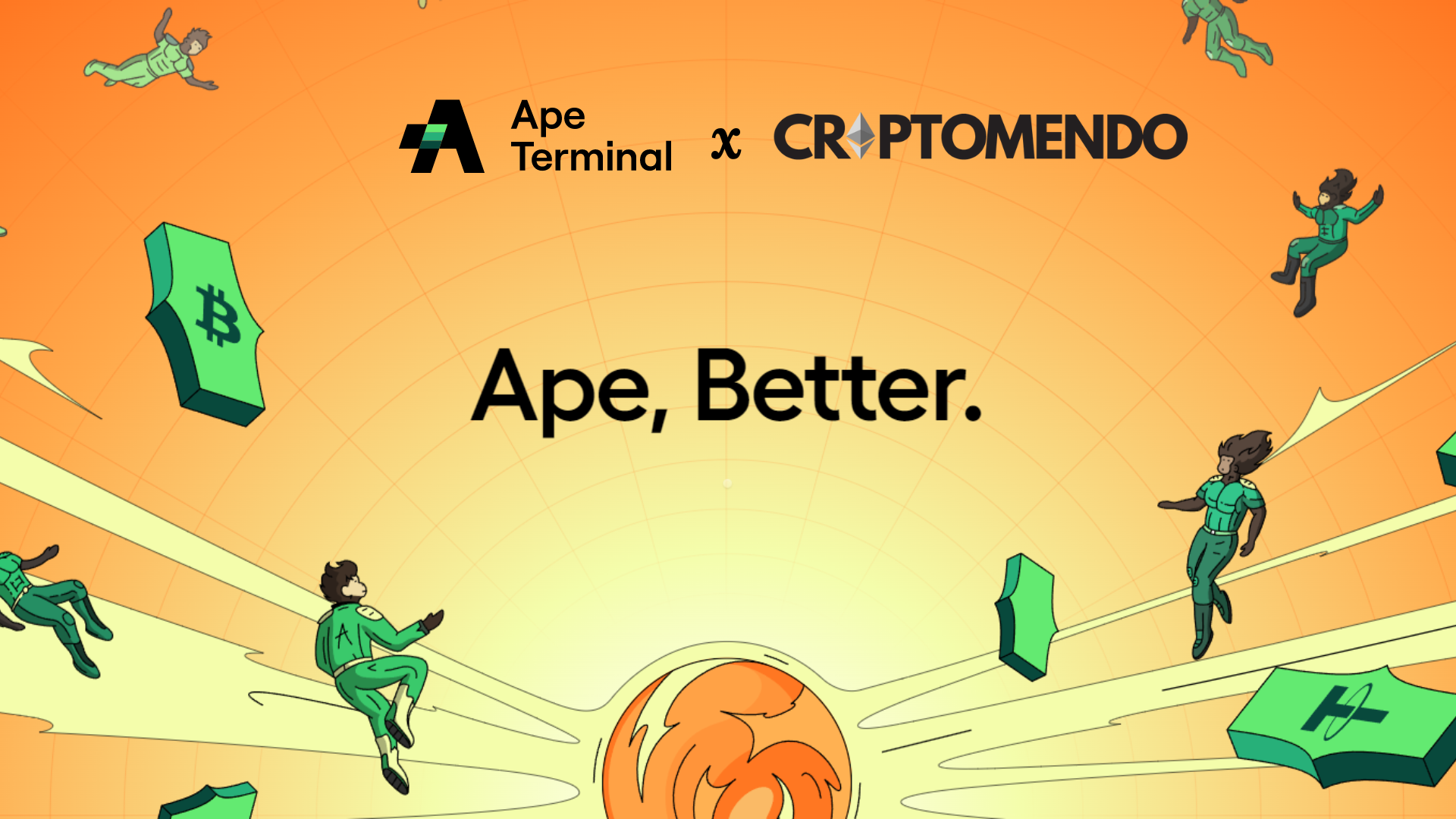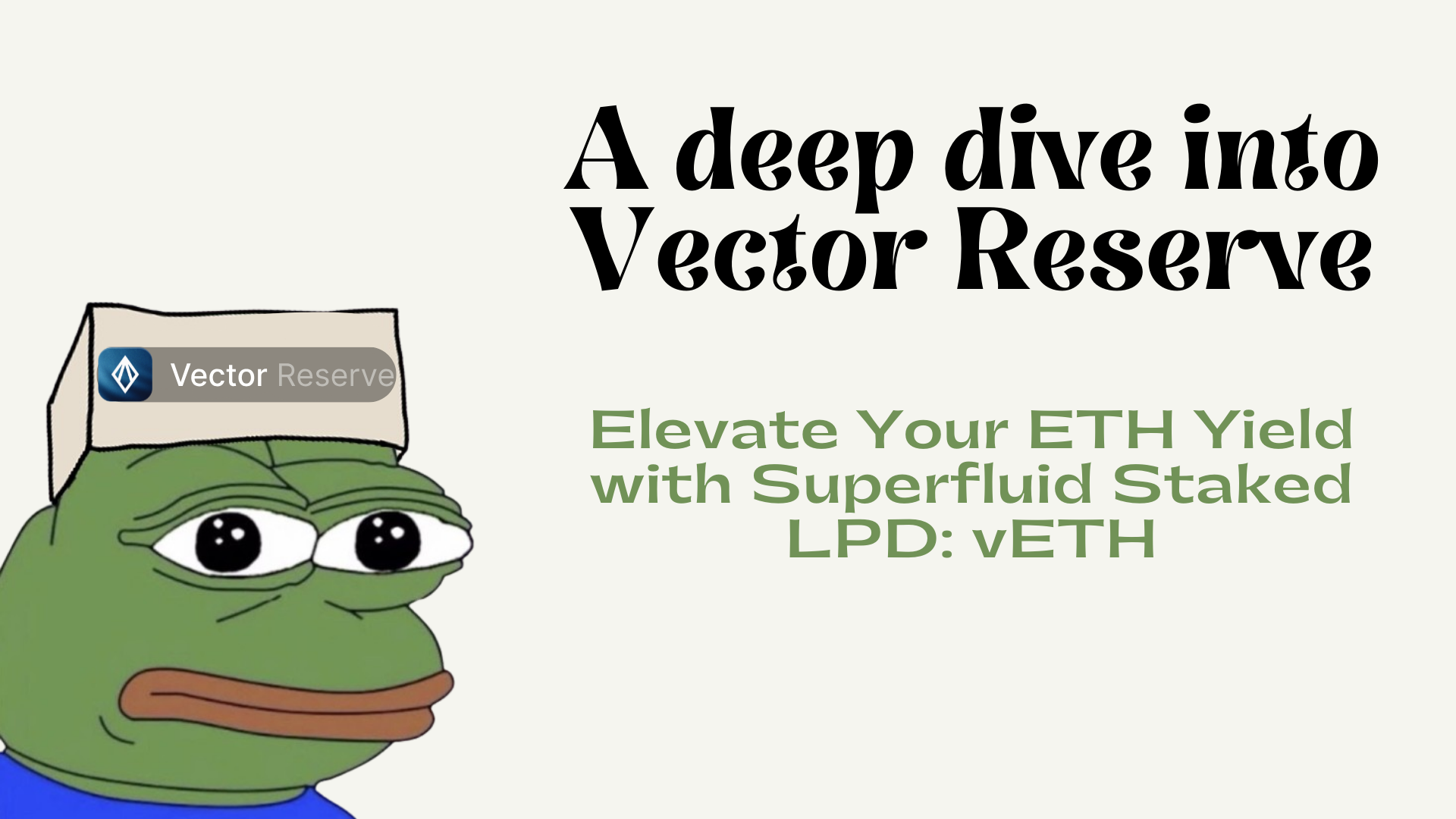I believe Entangle can solve the DeFi liquidity issues by increasing capital efficiency, liquidity retention, and free movement of said liquidity. Imagine a world where your liquidity or yield-bearing asset is not just sitting there, but has additional layers of utility. Let me tell you all about Entangle, and why I’m excited about what they’re building. Let’s dive in!
As always, I’ve included a TLDR at the end (click to jump ahead).
What is entangle?
My guy Pronos originally put me onto Entangle. And, after some reading, I was immediately hooked.
Entangle is a layer 1 powered by the Cosmos SDK, dubbed by the team as a ‘liquidity sub-layer’. It can connect to endpoints of any EVM and non-EVM blockchain, as well as the apps built on top of them.
The ultimate goal is to solve DeFi’s liquidity issues by providing utility to liquidity. This utility comes in the form of two core products: a synthetics Dapp and Entangle USD. More on this in the paragraph about the main products.
Entangle plays into the interoperability and cross-chain thesis, with a specific focus on liquidity. The team’s core belief is that liquidity is currently limited, fragmented, and generally not optimized for interoperability. It’s not “sticky”, which means applications struggle to retain enough of it.
I believe a true win-win situation for both DeFi protocols and DeFi degens users is being built here. One that can truly solve the described challenges around liquidity.
All made possible through Entangle’s facilitative infrastructure. Let me expand on that.
the 3 problems in defi that Entangle solves
If you want to skip the ‘what’ and get straight to the ‘how’ – scroll down to the next paragraph.
If you stayed, let me tell you about the 3 core problems in DeFi that Entangle wants to solve:
1. Limited and fragmented liquidity
Crypto has limited liquidity, especially compared to TradFi. Not only is crypto liquidity limited, it’s also fragmented. It’s siloed within various ecosystems and spread across an array of blockchains. Let’s say you’re a project owner that decides to deploy on chain x. That typically means you’re limited to the users on said chain.
Faisal Mehrban, Entangle’s CEO, mentions one simple reason why this is a problem: within DeFi, liquidity is your life source. Especially for DEXes. If there’s only fragmented liquidity on your protocol — liquidity that isn’t able to interact with other protocols — then you’re limited in terms of business viability. It limits you in what you can achieve and offer to your users.
2. Lack of liquidity retention
Most liquidity on DeFi protocols is temporary — also describable as “short-term liquidity”. It typically doesn’t stick around for long. E.g. liquidity from people who are there to farm incentives or airdrops. This liquidity is not “sticky”, as Faisal describes it.
Non-sticky liquidity is a challenge for protocol owners. They prefer to have deep, long-term liquidity. Some protocols use incentives to lock LP tokens, but ideally you don’t want to strongarm people into keeping their liquidity position. This brings us to Entangle’s first Dapp: the synthetics vault. I’ll get into this later on. Feeling impatient? Jump straight to the synthetic vaults section.
3. Non-optimized yield
For the protocol owners, liquidity retention is tremendously impactful; it’s their life source after all. It’s not just the protocols that benefit from Entangle’s solutions. You, the DeFi users, get a really exciting opportunity here as well.
That opportunity comes in the form of yield and liquidity optimization:
- As an experienced user, you use Entangle for liquidity- and yield optimization. All powered by free movement of liquidity through Entangle’s synthetics app.
- As an inexperienced user, you use Entangle to lower your entry barriers. Gain exposure to yield-bearing assets without having to learn all the specifics of DeFi. That journey is not only time-consuming and risky, it’s also difficult to master.
What are examples of non-optimized yield?
Your liquidity deposit on a DEX like Uniswap is one example, where you receive LP tokens in exchange for your deposit. Assuming there’s no additional incentive from the project you’re providing liquidity for, then there’s not much else you can do with those LP tokens.
Imagine a world where you can synthesize those LP tokens to create a yield-bearing asset which you can borrow against.. Now stop imagining it, because that’s exactly what Entangle is building.
What are entangle’s main products?
I’ve told you what Entangle does and what their core philosophy is. Now it’s time to dive into the ‘how’.
Entangle is working on three core products:
- The Entangle blockchain and bespoke Oracle solution
- Synthetic vaults Dapp
- Entangle USD
Entangle blockchain and distributed oracle solution
Entangle used the Cosmos SDK to create what they call a yield-centric layer 1 blockchain. Their own native sub-layer. The Cosmos SDK ensures IBC transferability, and allows them to connect to both EVM and non-EVM chains.
The sole purpose of the Entangle blockchain is to store information for Entangle’s distributed oracle solution and to validate oracle messages.
What does the Entangle oracle solution actually do? And why not use an existing oracle provider?
Existing oracle solutions won’t suffice, considering the scope of what Entangle is building. They can’t adjust to the complexity of needing smart contract automation on multiple blockchains. From a tech perspective, most of the current oracles landscape is rendered out.
From a cost perspective, the established solutions wouldn’t fit either. One simulation using an existing oracle provider showed a cost of up to six figures per month to power just two Entangle Dapps.
To truly harmonize ecosystems, Entangle needs to be extremely efficient when it comes to fees. Their in-house oracle is custom-built on their own blockchain to fit their specific needs. Building the oracle solution on their own blockchain opens up the door for possibilities not achievable through traditional oracle solutions.
What really excites me about all this, is that Entangle provides an SDK for devs to integrate the Entangle oracle solution into their own applications. Which could potentially bring in a large amount of revenue. Oh, did I already mention the revenue sharing with token holders..?
What’s the role of keepers and validators in the Entangle ecosystem?
Keepers and validators play a vital role within the Entangle blockchain and oracle solution. We asked the team about the roles of each during their AMA in the Rarestone Compass TG :
Keepers:
- Deliver information from any source (off-chain or on-chain) to the Entangle Blockchain.
- Aggregate information from the Entangle Blockchain to external Entangle Endpoints. Entangle Endpoints looks for consensus amongst keepers before an event is executed.
- Keepers must deposit an amount in Entangle Tokens when sending information as an added security measure for honest behavior.
Validators:
- Look for consensus amongst keepers and run on-chain computation to compute verifiable orders for events.
- Validators self-stake a certain required amount of $ENTGL tokens to run Full Nodes, and participate in proposing/submitting and voting on new blocks.
Product #1: Synthetic vaults
The synthetics Dapp is the main product, which allows any yield-bearing asset (like LP-tokens) to be replicated on-chain.
Let me give you an example:
- You provide liquidity on Uniswap and receive LP tokens
- You synthesize these LP tokens through Entangle, thus receiving synth-LP. This synth-LP is not just air, it’s always backed 1:1 by the actual LP tokens from Uniswap.
- You can now perform other DeFi actions with the synth-LP
Essentially, synth-LP tokens are Liquid Staked Derivatives of the original asset. These synthetic yield-assets can be used to borrow against. Because synth-LP tokens are available cross-chain, users of other ecosystems can gain exposure to these LSD yield-assets. Even without leaving their chain of choice.
For end-users, this improves capital efficiency and optimizes their yield. For DeFi protocols, this improves liquidity retention. I’ve used LP-tokens as an example, but it basically implies to any yield-bearing asset. Pretty cool, right?
Product #2: Entangle USD
During the AMA in the Rarestone Compass TG, we heard that Entangle USD has (temporarily) been sidelined. The architecture has already been mapped, but the team is observing the regulatory field so they don’t run into any issues. Nonetheless, I’ll give you a quick run-down on what exactly the Entangle USD entails.
Entangle USD is a fully collateralized stablecoin. Let’s visit the scenario I used for the synthetic vaults, where you successfully acquire synthetic LP-tokens. You’re now able to deposit those synth-LP tokens and borrow Entangle USD against them. Congratulations, you’re now effectively earning and borrowing at the same time.
Remember, the synth-LP tokens are ALWAYS backed 1:1 by the “original” LP-tokens. Entangle USD is backed by the synthetic LP-tokens that users deposit. Logically, you can’t borrow against every synth-LP. The Entangle DAO has a say in which synth-LP is allowed for this purpose. There are mechanisms to keep the Entangle USD value stable, which are revealed once the regulatory aspect is clearer.
$ENTNGL token utility
Let’s start with the one utility I’ll always be excited about: revenue sharing! I’ll explain the streams and percentages in the paragraph about revenue sharing.
The token utilities include:
- Stake to earn your share of the revenue
- Stake to become a delegator or validator on the Entangle chain
- Deposit to become a keeper on the Oracle solution
- Pay gas fees on the Entangle chain
- Use it to vote in the Entangle DAO
Entangle revenue sharing
Entangle generates REAL revenue through their dAPPs, their blockchain, and their Oracles solution. Emissions and rewards will always be backed by real revenue: so no inflationary pressure.
The picture below explains how Entangle generates revenue, and how much is funneled back to the token holders:

TLDR;
- Liquidity in crypto is limited and siloed within ecosystems. It’s thinly spread over a large number of Dapss on various blockchains. For DeFi protocols it’s their life source, yet they struggle to retain it for longer periods of time.
- By adding secondary, and even tertiary utility to liquidity, Entangle aims to create a win-win situation for both DeFi protocols and DeFi users. This win-win situation comes in the form of free movement of cross-chain liquidity. Made possible by Entangle’s liquidity sub-layer.
- Entangle’s main product is their Synthetics vault. It allows users to create synthetic versions of any yield-bearing asset. For example, users can synthesize their LP tokens, after which they received synth-LP.
- These synthesized assets are basically ‘Liquid Staked Derivatives’ of the original asset, and can be used to perform further DeFi operations with. One example is to borrow against them. Through Entangle’s cross-chain DEX Network, users can gain exposure to yield-bearing assets on multivarious blockchains.
- To power the cross-chain magic, Entangle built their own oracle solution. This was necessary as most of the current oracle landscape either didn’t meet the technological requirements, or wasn’t cost-efficient enough. Either way, they wouldn’t fit the scope of what’s being built here.
- Entangle’s in-house oracle solution fits their needs perfectly. It also allowed them to create an SDK for project owners to integrate the oracle into their their own protocols.
- The oracles and the Entangle dapps such as the synthetic vaults, are powered by the Entangle layer 1 blockchain. What the team describes as the liquidity sub-layer. The chain is built using the Cosmos SDK, which allows them to connect to both EVM and non-EVM chains.
Investment thesis;
I personally believe that something big is being built here, and I’m quite excited to watch how it all enfolds.
I’m excited for their synthetic vaults app (working product on testnet), the oracle solution which can be integrated into external Dapps, Entangle USD, as well as the potential for more Entangle apps to be developed.
The real kicker is the revenue sharing as the main token utility. You’ll get REAL YIELD based on actual revenue instead of inflationary tokenomics. The token has other strong utilities, such as paying for gas fees on the Entangle blockchain and oracles.
GAIN ACCES TO HIGH-QUALITY DEAL FLOW
Want access to early-stage opportunities? But don’t have the connections for it?
The Presale Club is your answer. TPC provides investors of any size with acces to high-quality, early-stage opportunities. Fill out the form to gain access:
request acces
Entangle website: Entangle.fi
Entangle Twitter: twitter.com/EntangleFi
My Twitter: twitter.com/cryptomendo
Rarestone Compass community: t.me/rarestonecompass
I hope you enjoyed this article! Remember to do your own research and come up with your own thesis. I am not a financial advisor, just a retard with a mechanical keyboard.





